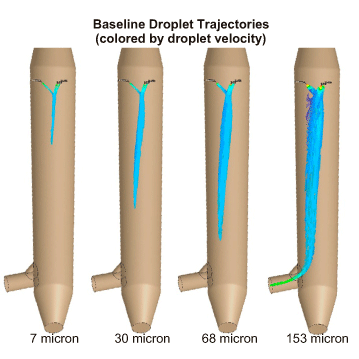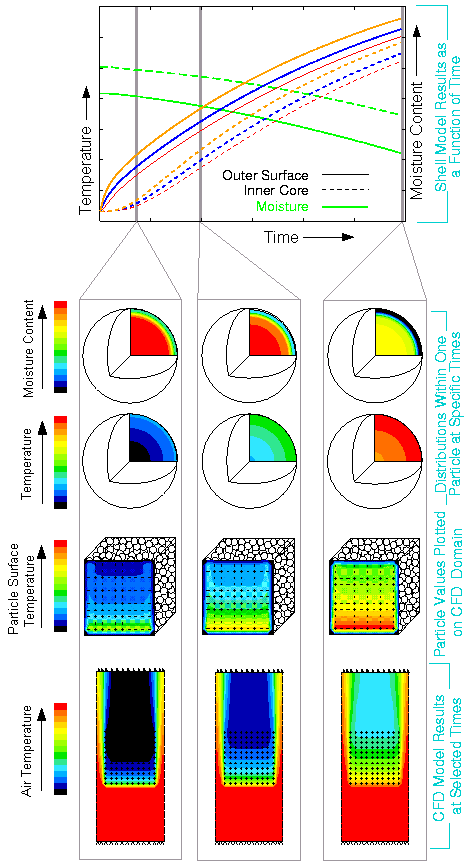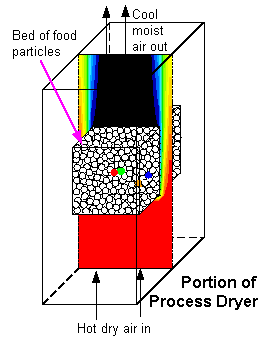Particulate and Evaporation using CFD Flow Modeling
Spray Tower Design:
Water droplets are injected into a hot gas stream to cool the flow. It is critical to obtain complete evaporation of the water droplets while optimizing the uniformity of the gas velocity and temperature within the spray tower.
In this baseline case (above, right), three dual-fluid nozzles inject water at the top of the tower. Using droplet size information provided by the nozzle manufacturer, the CFD model tracks the droplet trajectories while calculating the droplet evaporation, gas temperature, and concentration of water vapor released by the droplets. Unfortunately, evaporation of the largest droplets is not complete and they exit the tower.

Food Kernel Drying - Combined CFD/Shell Model:
Use of a Shell Model and a CFD Flow Model Provides a Detailed Simulation of Drying Phenomena
ASC combines its Computational Fluid Dynamics program with a 1-D shell model to define the drying behavior within a bed of small bodies, such as food particles in a process dryer.
The CFD model is used to define the air flow through the bed of particles. The air flow is affected by the resistance, heat transfer, and mass transfer from the bed of particles.
The 1-D heat and mass transfer within the food particles is calculated for each of the food particles shown in the schematic (below). Variations in the air temperature and moisture through the bed results in different distributions for each particle.
Sample results are presented from both the CFD and 1-D shell models. Colors in the line graph refer to body locations shown below.


